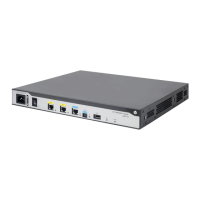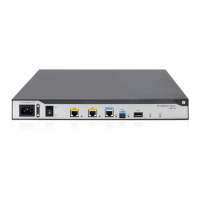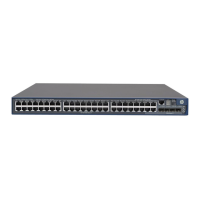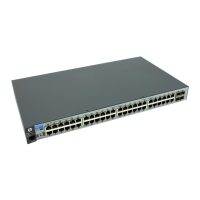47
Step Command Remarks
3.
(Optional.) Delete static
multicast routes.
• Delete a specifi
route:
undo ip rpf-route-static
[ vpn-instance
vpn-instance-name ]
source-address { mask-length |
mask } { rpf-nbr-address |
interface-type interface-number }
• Delete all static multicast routes:
delete ip rpf-route-static
[ vpn-instance
vpn-instance-name ]
N/A
Specifying the longest prefix match principle
You can enable the device to use the longest prefix match principle for RPF route selection. For more
information about RPF route selection, see "RPF check process."
To specify the longest prefix match principle:
1. Enter system view.
system-view
N/A
2. Enter MRIB view.
multicast routing
[
vpn-instance
vpn-instance-name ]
N/A
3. Specify the
match principle.
longest-match
By default, the route preference
principle is used.
Configuring multicast load splitting
You can enable the device to split multiple data flows on a per-source basis or on a
per-source-and-group basis. This optimizes the traffic delivery.
To configure multicast load splitting:
1. Enter system view.
system-view
N/A
2. Enter MRIB view.
multicast routing
[
vpn-instance
vpn-instance-name ]
N/A
3. Configure multicast load
splitting.
load-splitting
{
source
|
source-group
}
By default, multicast load splitting
is disabled.
This command does not take
effect on BIDIR-PIM.
Configuring a multicast forwarding boundary
You can configure an interface as a multicast forwarding boundary for a multicast group range. The
interface cannot receive or forward multicast packets for the group range.
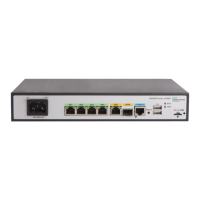
